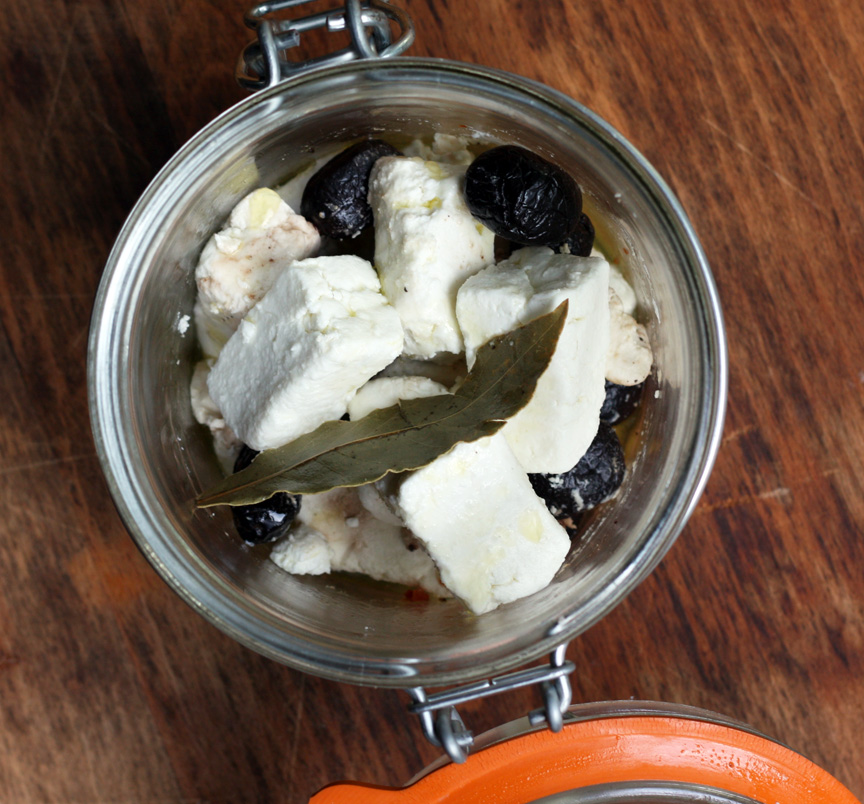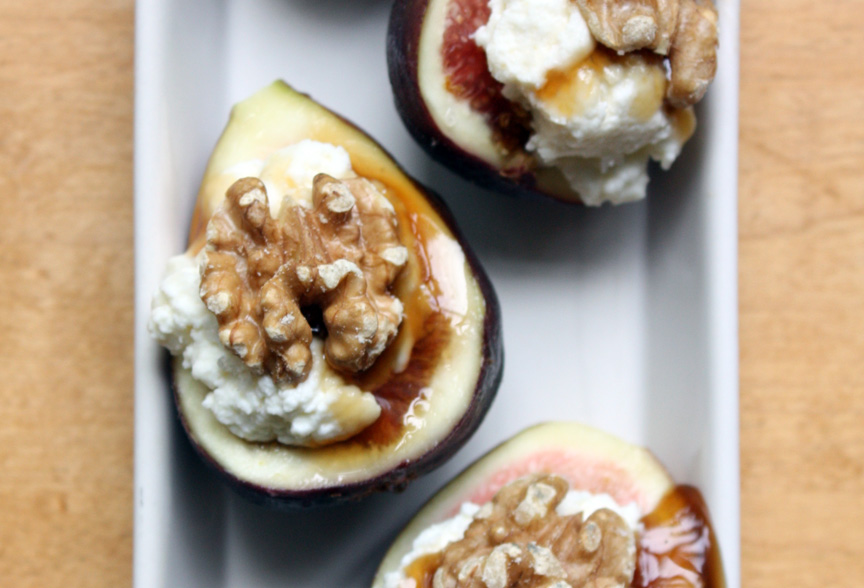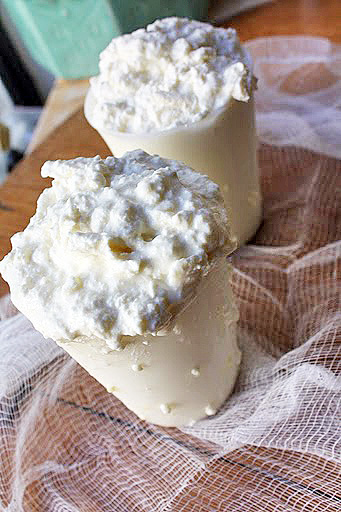
Feta Cheese
On August 4, 2012 by sixtyacrebakerMaking cheese can be labor intensive, but it is not difficult. It requires attention to detail, a super clean work area, a few specialty ingredients, and patience. Feta cheese is aged in a brine; making it salty and creamy.
Feta Cheese
1 gallon pasterized goat’s milk (do not use ultra-pasterized)
1/4 tsp aroma B mesophillic starter
4 drops (double strength*) rennet
1/4 cup non-chlorinated (bottled) water
butter muslin
flake sea salt or kosher salt
for brine
8 cups water
1/2 cup kosher salt
Heat the goat’s milk slowly in a large heavy stock pot to 74F. Remove pot from the flame and burner (but leave on stove), and gently stir in the mesophillic starter. Allow to sit for 10-15 minutes before moving on to the next step.
Meanwhile, mix the rennet into the 1/4 cup water and after the wait time, gently stir into the milk pot. Do not scrape the sides or bottom of pan, but gently stir for about 2 minutes. Cover the pot and leave on the back of the stove undisturbed for 12 hours. the objective is to keep the milk at the 74F for the entire time
After 12 hours, gently ladle the curds into a muslin lined colander (over a bowl if you wish to keep the curds). Allow it to sit uncovered for 1 hour. After 1 hour, tie the ends of the butter muslin to create a pouch that can be suspended or hung**. I tie the pouch to my sink faucet and allow the curds to drain directly into the sink. It is also easy to run a wooden spoon through the knot and suspend the pouch over a deep pot. Allow the curds to drain for a full 12 hours. Open the pouch remove the curd mass (it should be fairly stable) and flip it over. return it to the butter muslin and suspend for an additional 12 hours.
**an alternative: after you have drained the curds for the initial 1 hour, you can transfer the curds to a muslin lined plastic tomato basket, flipping every couple of hours. this will give you a more uniform shape.
remove the curd, which should now be quite firm, from the cheesecloth and place on a draining mat, or surface that has small holes (cooling rack, pizza pan, bamboo mat). Cut the curds into desired size (about 1″x1″ or larger for interesting presentation). Lightly salt all sides of the pieces and allow to dry for 3-5 days uncovered in your refrigerator. you are looking for the pieces to become a bit yellow on the edges. Prepare your brine with enough advance that it is cooled to approx 60F by the time you are ready to use it (you can store it in the refrigerator if made in advance). To prepare the brine, simply boil the water and add the salt. stir to dissolve completely.
When ready to brine, place the dried cheese pieces in a glass jar, careful not to jam and pour the brine over. cover the jar and brine the feta for 2-3 weeks before enjoying. You will notice the flavor builds as time progresses. If stored properly, this will last about 6 months (although i dare say it is so delicious, it probably won’t make it that long!)
I find the brine a bit salty, so I quickly rinse my feta in non-chlorinated water, and gently dry with a paper towel before eating. It is delicious & beautifully presented with strong black olives, a bit of hot pepper, and a drizzle of olive oil.

Ripe Figs with Ricotta & Honey
On July 13, 2012 by sixtyacrebakerIt is a given; if i were to find myself naked, roaming the garden of Eden, I surely would be occupied with plucking and eating figs. Not with modesty <strong<of.any.sort. Figs are good fresh or dried, plain & gilded. For a simple and gorgeous treat; serve these as an appetizer or dessert.
Gilded Figs
ripe fresh figs
ricotta cheese (fresh if you can get it)
sea salt
honey
toasted walnuts
Slice the figs in half, and put a generous scoop of fresh ricotta on top. Drizzle your best honey to just cover the ricotta, sprinkle a few grains of sea salt and top with a walnut half. Serve chilled or room temperature.
tastes great accompanying a cold glass of Prosecco

Fresh Ricotta
On March 24, 2011 by sixtyacrebakerHomemade ricotta is nothing like what you find in the supermarket; packed tightly into tubs with expiry dates a month long. It is naturally sweet with creamy curds and only lasts a few days. That is the good news. It is a bit time consuming,uses quite a bit of milk, and can be a bit of a mess. Last week cannoli was on my mind so I whipped up a pot of fresh ricotta. And when I say whipped, I mean spent an entire day preparing, cooking, skimming and draining. For my birthday, my friend gave me a beautiful cookbook
“my calabria” by rosetta costantino. Rosetta shares a family recipe for ricotta using a combination of milk and cream. It produces a large yield perfect for eating with a spoon, whipped into lemon pancakes,stuffed into cannoli shells, or sharing with friends.
Ricotta
*from my calabria
1 gallon whole milk
3/4 cup cream
2 tsp kosher salt
1 tsp rennet
1/4 cup cold water
Place the milk and cream in heavy pan and stir to mix well. warm over heat to 200-210F. Remove from heat and add the salt. stir to dissolve. Let the milk to cool to 100F. skim any foam or skin that forms on top of the milk. In a small bowl, mix the rennet with cold water. Stir the diluted rennet into the pot of milk, then leave undisturbed until the milk has visibly thickened, about 10 minutes. Cut a large “cross” in the milk. Stir quickly with a wooden spoon for 15-20 seconds to break up the coagulated milk. Using a perforated metal skimmer immersed in the milk,slowly and gently stir in one direction, so slowly that it takes about 20 seconds to make one revolution. Milk will begin to separate into curds and whey. Slowly pour off the whey through a cheesecloth lined colander, set over a bowl to drain. Let stand at room temperature until whey stops dripping from the sieve. Alternately, if you have ricotta baskets, you can use those to drain the curds. The ricotta should be covered with plastic wrap and stored in the refrigerator. It is best used within 2-3 days. This makes about 2 lbs
* I don’t throw the whey out…I use it. Mike and I use it in our smoothies and I give the dogs a bit of it in their kibble. It helps with a shiny coat. I can’t say the same for us humans.